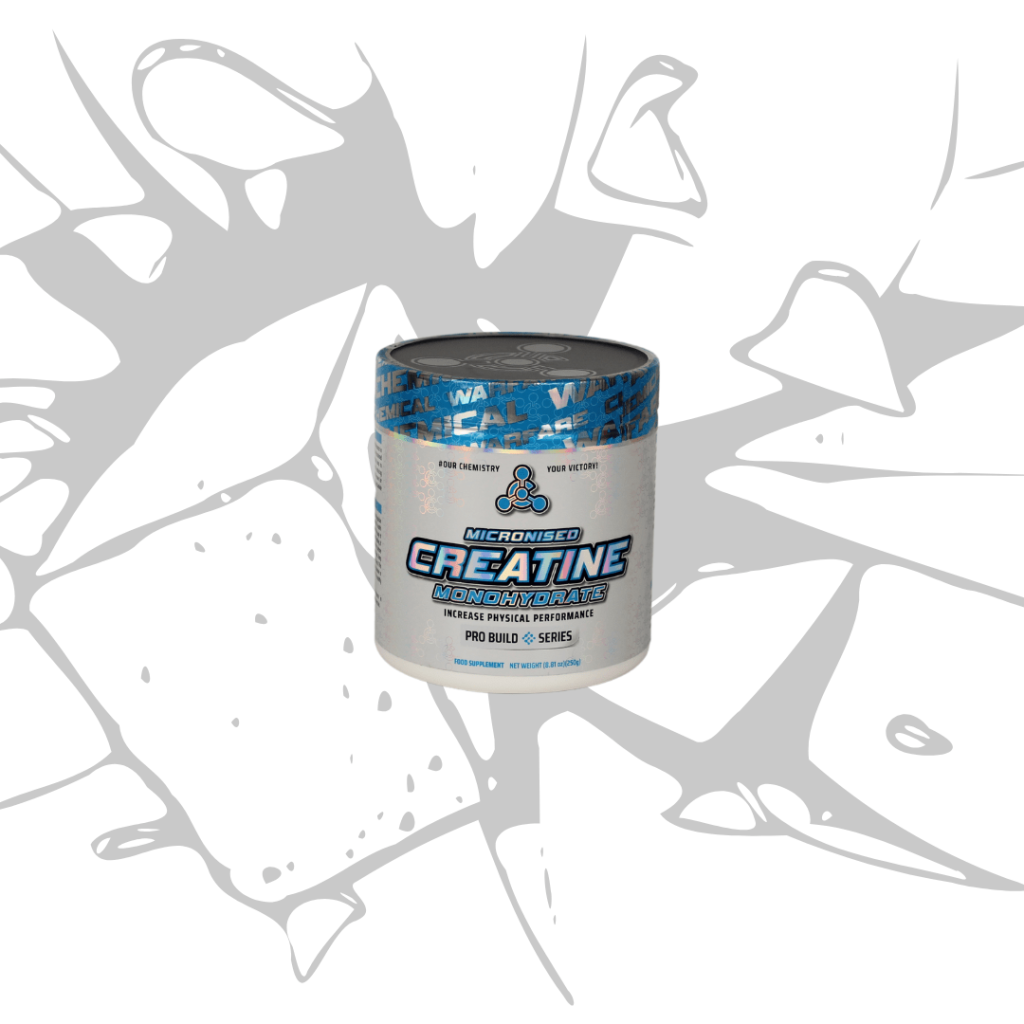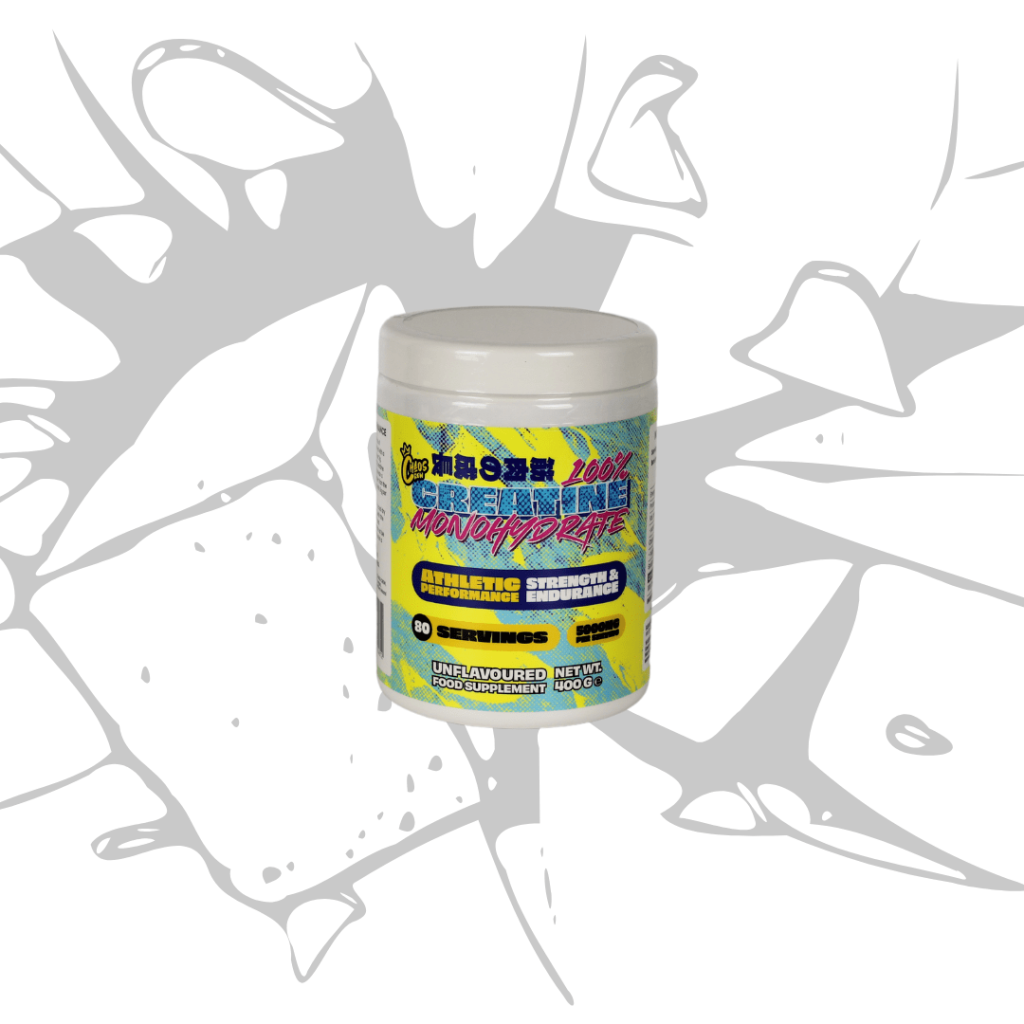


What Is Creatine?
Creatine is a naturally occurring compound found in muscle cells, helping them produce energy during intense exercise. It’s synthesized in the body from amino acids, primarily in the liver, kidneys, and pancreas, and stored in muscles. Common dietary sources include red meat and fish, though the amounts from food are relatively low.
What Is in Creatine Supplements?
Most creatine supplements contain creatine monohydrate, the most researched and proven form. Other forms include:
- Creatine HCL: Known for better solubility and absorption.
- Creatine Ethyl Ester: Claims faster absorption but lacks strong scientific support.
- Buffered Creatine: Designed to reduce breakdown in the stomach.
- Creatine Magnesium Chelate: Combines creatine with magnesium for enhanced uptake.
How Does Creatine Work?
Creatine boosts the body’s ability to produce adenosine triphosphate (ATP), the main energy source for muscle contractions. During high-intensity activities, muscles quickly deplete ATP. Supplementing with creatine increases stored creatine phosphate, enabling faster regeneration of ATP. This leads to improved strength, power, and performance in short, explosive activities like weightlifting and sprinting.
Benefits of Creatine
- Increased Strength and Power: Enhanced performance in resistance training and sports.
- Muscle Growth: Stimulates muscle cell hydration, leading to visible size increases.
- Improved Exercise Recovery: Reduces muscle damage and speeds up recovery.
- Enhanced Brain Function: May support cognitive function and reduce mental fatigue.
Who Is Creatine Suitable For?
Creatine is suitable for:
- Athletes and Bodybuilders: Looking to improve power, strength, and muscle mass.
- Fitness Enthusiasts: Wanting better workout performance and recovery.
- Older Adults: Supporting muscle maintenance and cognitive health.
- Vegans and Vegetarians: Typically have lower creatine stores due to limited dietary intake.
How to Take Creatine
1. Loading Phase (Optional):
- Dosage: 20 grams per day, split into 4 servings of 5 grams.
- Duration: 5-7 days.
- Why: Quickly saturates muscles with creatine.
2. Maintenance Phase:
- Dosage: 3-5 grams per day.
- When: Post-workout or with a carbohydrate-rich meal to enhance absorption.
3. Cycling Creatine:
- While cycling isn’t necessary, some people prefer 8-week cycles followed by 2-4 weeks off.
Possible Side Effects and Considerations
- Water Retention: Initial weight gain due to increased water in muscles.
- Digestive Upset: Rarely, bloating or stomach discomfort.
- Kidney and Liver Health: Safe for healthy individuals but consult a healthcare professional if you have pre-existing conditions.
Additional Tips for Optimal Results
- Stay Hydrated: Drink plenty of water to support kidney function and maximize benefits.
- Combine with Exercise: Use creatine alongside a structured workout plan for best results.
- Consistency Is Key: Take creatine daily to maintain elevated muscle stores.
FAQs About Creatine
- Is Creatine Safe for Long-Term Use? Yes, studies show no adverse effects in healthy individuals over long-term use.
- Can Women Take Creatine? Absolutely. Women can experience similar strength and muscle gains as men.
- Does Creatine Cause Hair Loss? There’s limited evidence suggesting creatine may raise DHT levels, a hormone linked to hair loss, but the data is inconclusive.
- What Happens If I Stop Taking Creatine? Muscle creatine stores return to baseline after a few weeks, potentially reducing performance gains.
By understanding how creatine works and how to use it effectively, you can maximize its benefits and boost your fitness journey. Supplement smart and train hard!



